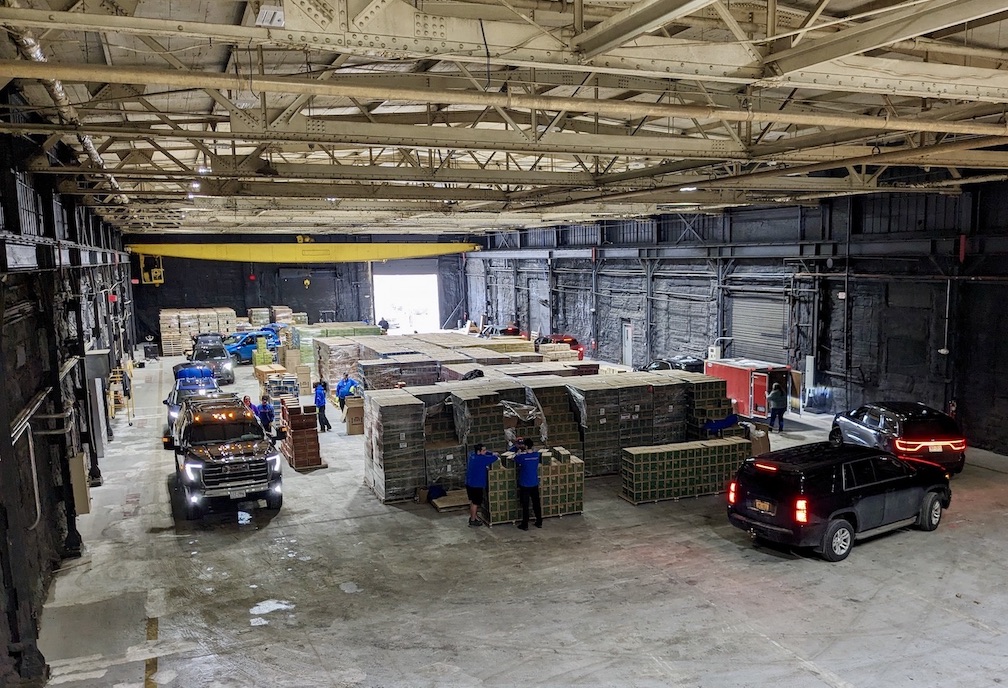Featured News - Current News - Archived News - News Categories
Thirteen Niagara University chemistry and biochemistry majors showcased research findings at the 252nd American Chemical Society National Meeting & Exposition. Three NU faculty members also presented at the international conference, which took place Aug. 21-25 at the Pennsylvania Convention Center in Philadelphia.
The event annually attracts approximately 17,000 chemists, chemical engineers, academicians, graduate and undergraduate students, and other related professionals.
The Niagara University chemistry and biochemistry students presented on topics they are investigating under the guidance of NU faculty members.
"Dr. (Mary) McCourt, Dr. (Lawrence) Mielnicki and Julie Hughes have had a huge impact on my life and have modeled me into the scientist I am today," noted rising senior Jamie Catalano. "Their constant instruction will undoubtedly lead to my future success in this field of study."
Like Catalano, Christopher Fritschi, also a rising senior, was one of six Niagara students who returned to the conference for a second year. He, too, credited his professors at NU with being critical to his development as a scientific researcher.
"All the faculty members do an amazing job in preparing us for real-world research and laboratory techniques," said Fritschi, who offered a talk on how a starfruit molecule could be prepared and used as a building block in larger drug synthesis. "Without them - and especially my adviser, Dr. (Luis) Sanchez - I would never be as successful as I am today."
Several of the studies have potentially meaningful implications on the treatment of diseases. Listed below are the participating students and the titles of their presentations:
All of the students are members of Niagara's ACS student chapter.
Sanchez, the chapter adviser at NU, was impressed when 10 undergraduate students made the itinerary for last year's conference in Boston. He said he was thrilled the university's participation in one of the largest chemistry meetings in the world has grown this summer, especially given the relatively small size of Niagara's department of biochemistry, chemistry and physics.
"I am very proud to be part of this department at Niagara University," said Sanchez, who was recently appointed president-elect of the Gamma Sigma Epsilon national chemistry honor society. "My colleagues do great research work and are so dedicated. We have a good group of smart, hard-working students, so we know that our efforts are totally worth it. We are also very fortunate to have the Golisano Center, which provides us with state-of-the-art scientific tools, and funds like NUSURF that support student research with the greatest impact."
During one of the meeting's symposia, Sanchez offered a talk titled "Exploration of selectivity control in reactions for the assembly of non-ribosomal peptide moieties," during which he presented the results of research projects conducted with students Burgeson, Ford, Fritschi, Mariani, alumna Emily York (Niagara Falls), and research associate Stephanie Scharmach, Ph.D.
In addition, one of Dr. Robyn Goacher's environmental chemistry projects, conducted with rising senior Gogna, was chosen for inclusion in the "Sci-Mix" session of the conference.
McCourt's research on a drug delivery system that can offer pain-free treatment of insulin to diabetics was highlighted during an Aug. 24 press event. McCourt was joined by Catalano and Mielnicki. The briefing resulted in a bevy of worldwide media coverage from outlets that included the New York Post, Daily Mail and The American Journal of Managed Care.
Programming for the national meeting is planned by 27 technical divisions that cover all scientific fields, secretariats that focus on multidisciplinary programming, and ACS committees. Meetings feature more than 9,000 papers and nearly 2,800 poster presentations organized into technical symposia that highlight important research advances.
Funding for the students to attend the conference was provided by the Niagara University Student Government Association; office of campus activities; McGlen-Gadawski Fund; Barbara Zimmer Memorial Award; department of biochemistry, chemistry and physics; College of Arts and Sciences; Academic Center for Integrated Sciences; NUSURF program; provost's office; and honors program.
Sanchez also received a travel award from the ACS Division of Organic Chemistry, and Niagara's ACS student chapter received a National Meeting Travel Grant.
The American Chemical Society serves more than 157,000 members globally, providing educational and career development programs, products and services.
To learn more about Niagara University's chemistry programs, visit www.niagara.edu/chemistry.





























